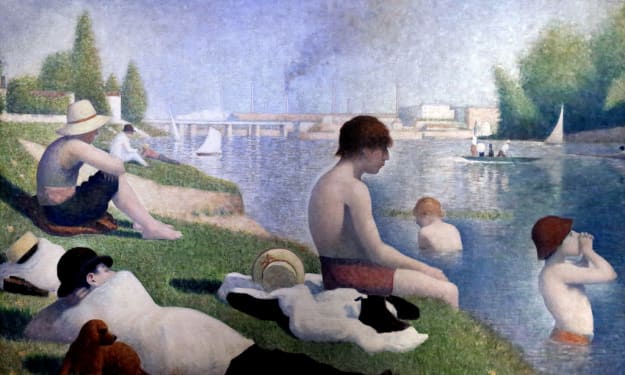The Ogham script of Celtic Ireland
A writing system used mainly on marker stones

Ogham is a script method that was used mostly by Irish Celts from around 300 to 700 AD, although it also spread to parts of Britain where a number of examples have been found, most commonly in Wales.
Ogham script
The script consisted of straight lines inscribed to the left or right of a central line. On standing stones, the central line was a vertical edge, such that short horizontal lines could be scratched on the faces that met at that edge. Because the writing started at ground level, the length of the message was limited by the size of the stone, even if more than one edge was used. The visual appearance of Ogham script, with lines branching off a central “trunk”, was that of a tree, and the system is sometimes referred to as the “Ogham tree”.
Ogham, in its original form, was an alphabetical system comprising fifteen consonants and five vowels. These were delineated by groups of up to five lines, to the left, to the right, or right across the central line. To distinguish five of the consonants from the five vowels, the former were long lines that crossed the central line at an angle, whereas the latter were short lines that crossed “straight”.

The or igin of Ogham
The name Ogham betrays its Irish origin, because it was named after the Irish god of learning and poetry, Ogma, who is credited in legend with being its inventor.
Another name for Ogham is Beth Luis Nuin, which equates to the use of ABC for the modern English alphabet because the Ogham names are those of the first three letters, which are delineated by one, two and three lines to the right, respectively. The resemblance of Ogham to the depiction of a tree also gave rise to the letter names being used to mean specific trees, with Beth meaning “birch”, Luis “rowan” and Nuin “ash”. The Irish Celts held trees and forests in high regard, such that their word for “wood” also meant “knowledge” and Ogham script had religious significance as well as being a means of recording facts.
How Ogham was used
Ogham may well have been used on materials such as wood and leather, but these are perishable and it is therefore the case that Ogham script is known today almost exclusively from its use on standing stones.
Because of this, it is not surprising that the uses to which it was put related to the functions performed by the stones themselves. Many were boundary markers, with the inscriptions stating the names of the owners of the land on either side of the stone. Others were grave markers, bearing the name of the person buried beneath (typically followed by the names of their father and their tribe).
More recent uses of Ogham script
Ogham has also been used in post-Celtic times, notably by medieval scribes who may have been inspired by original manuscript Ogham sources that have not survived. Sometimes these scripts mixed Ogham and runic symbols, and they were often transliterations of Latin texts. When used, the central line was usually horizontal and extra characters were incorporated to account for letters that were not available in the original Ogham alphabet.
The “Book of Ballymote” is a 14th century manuscript that is preserved in the Royal Irish Academy, Dublin. This contains pages in Ogham and other scripts that have been used as a key for deciphering the Ogham alphabet.
As mentioned above, the majority of surviving Ogham inscriptions are on Irish stones, and they are highly prized as relics of Celtic history. Modern developments have threatened the loss of many such stones and efforts have therefore been made to collect and preserve them. The best such collection is at University College Cork, where a covered walkway known as the Stone Corridor is lined with a large collection of Ogham stones. There is another important collection at the monastery of Mount Melleray in County Waterford.
About the Creator
John Welford
I am a retired librarian, having spent most of my career in academic and industrial libraries.
I write on a number of subjects and also write stories as a member of the "Hinckley Scribblers".






Comments
There are no comments for this story
Be the first to respond and start the conversation.